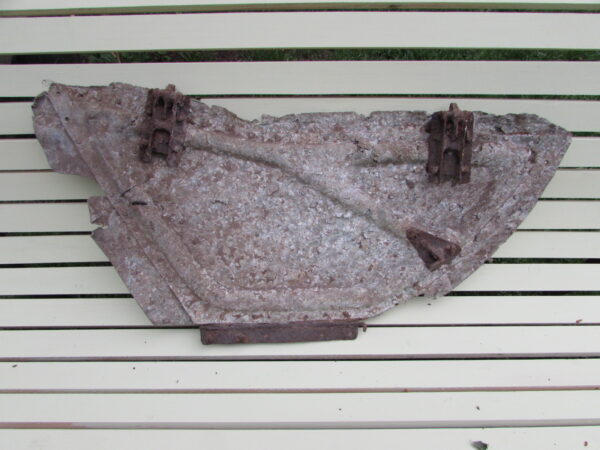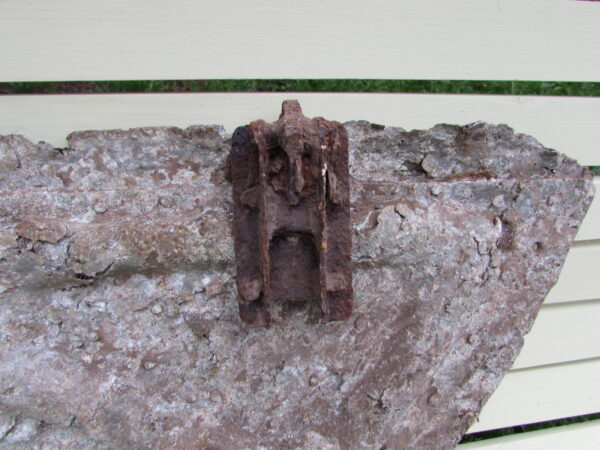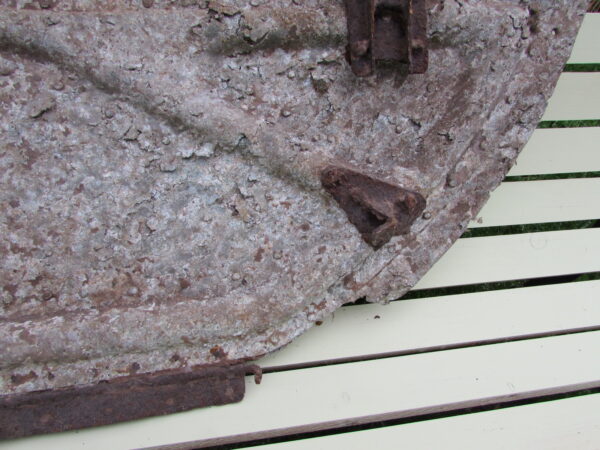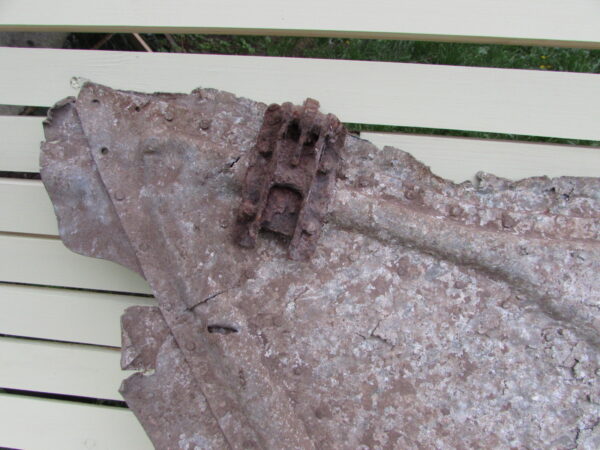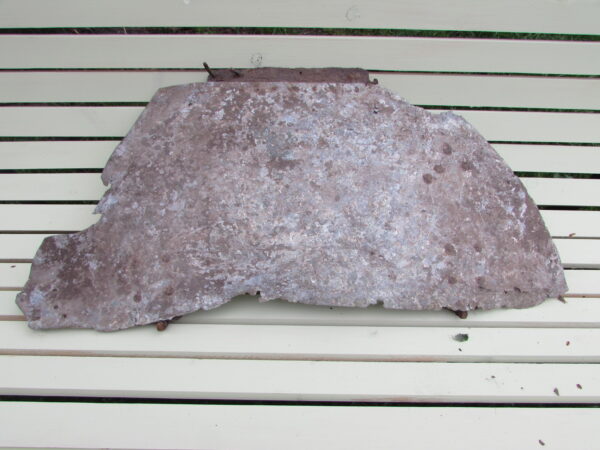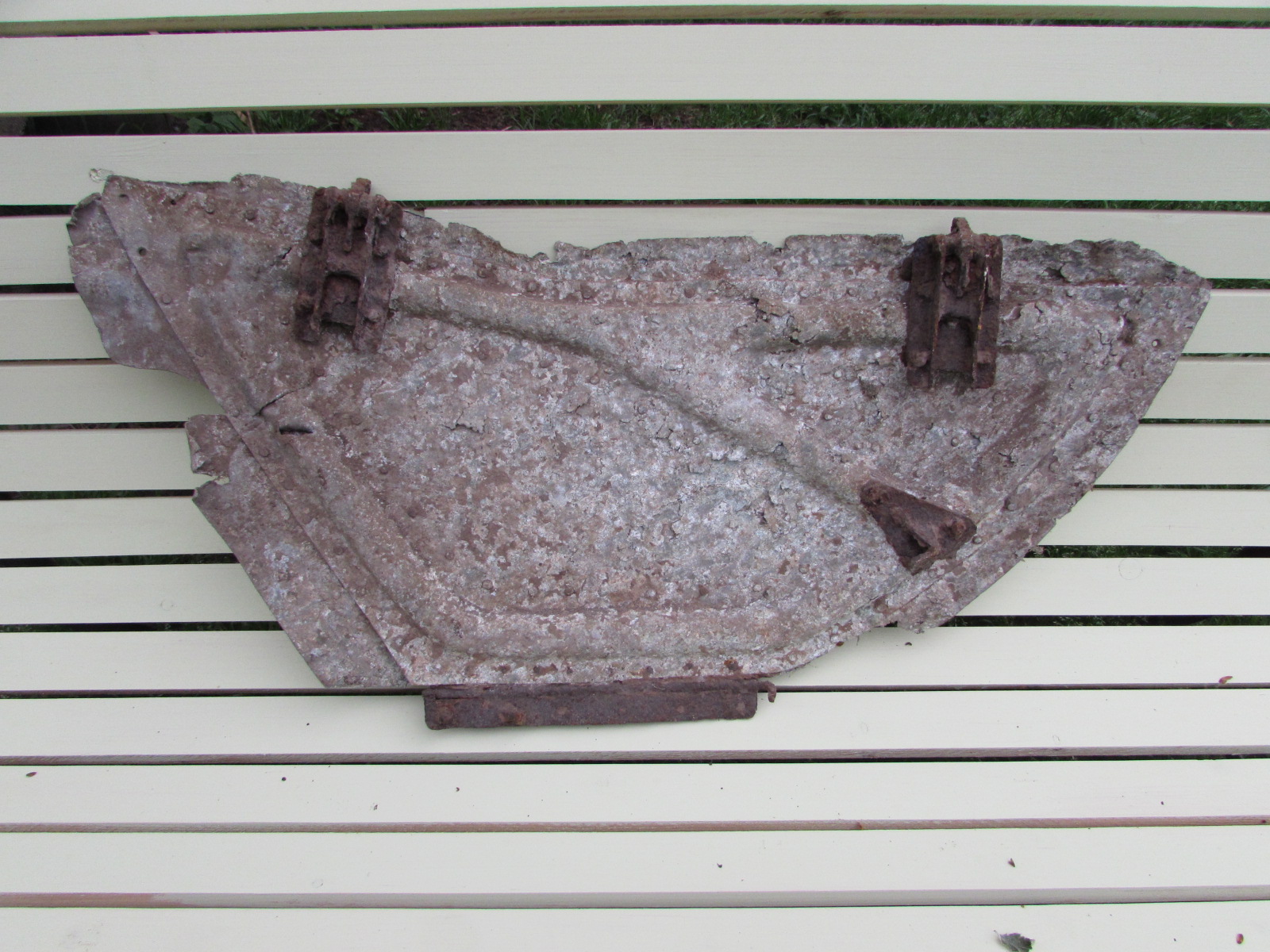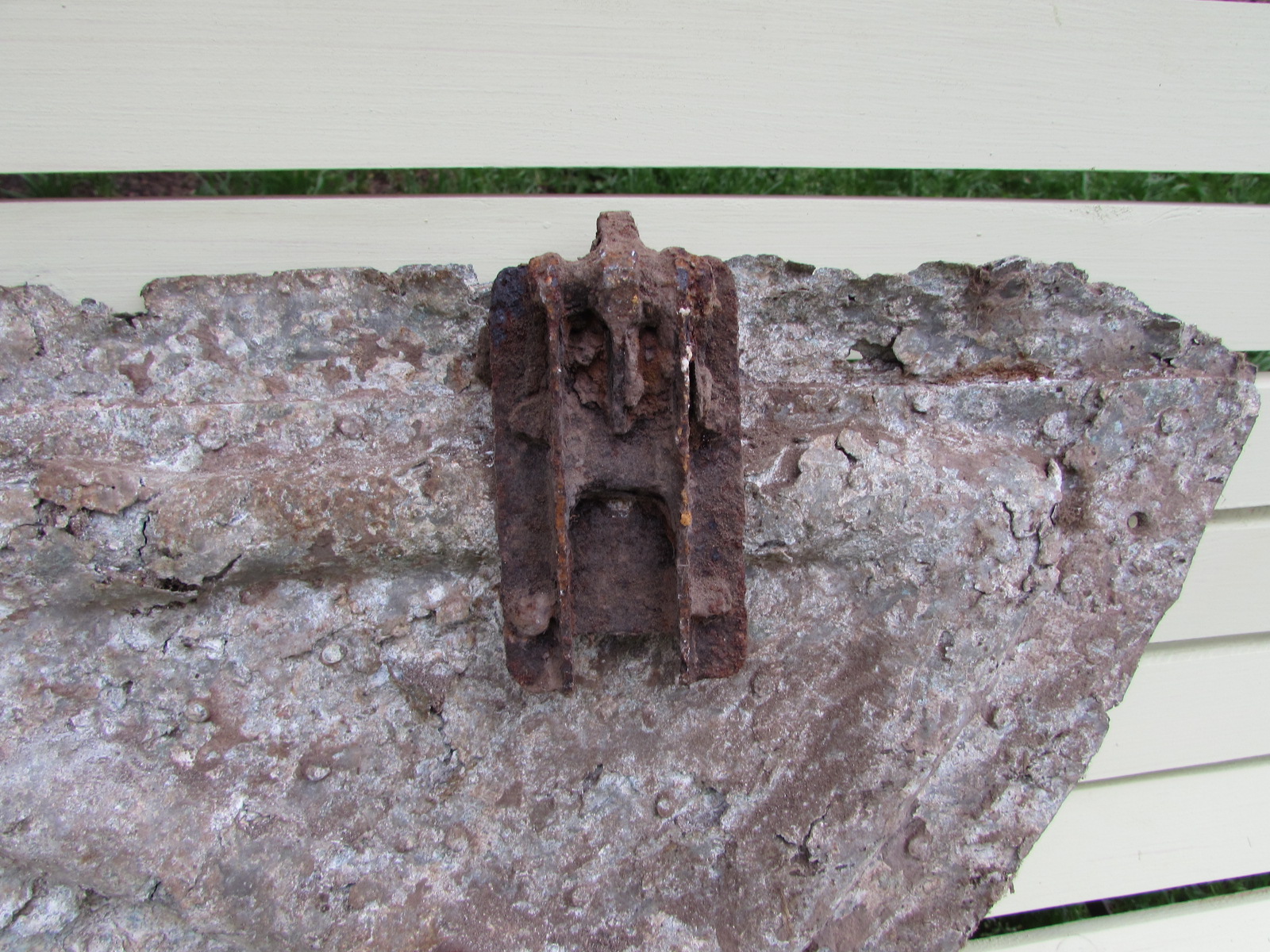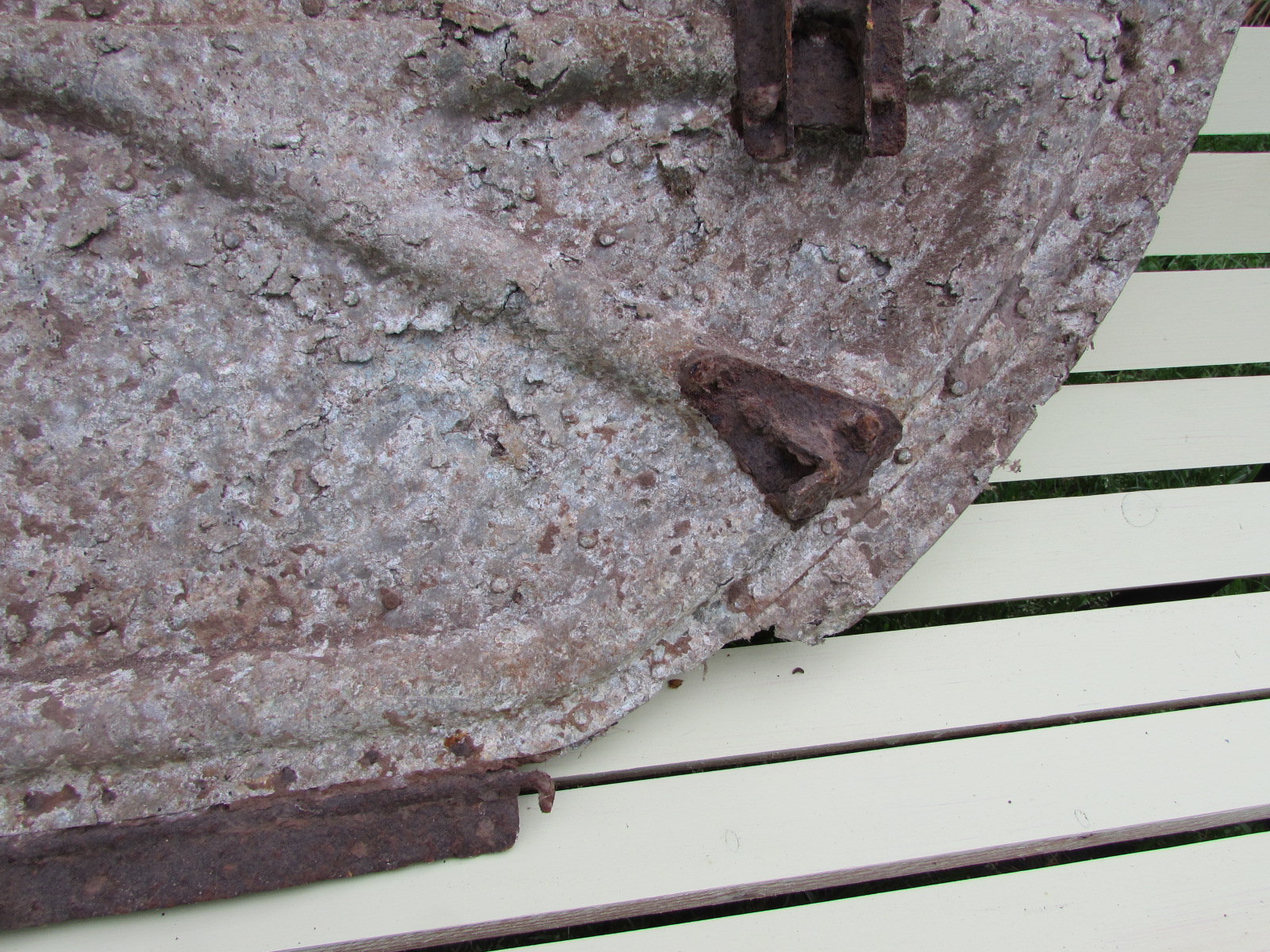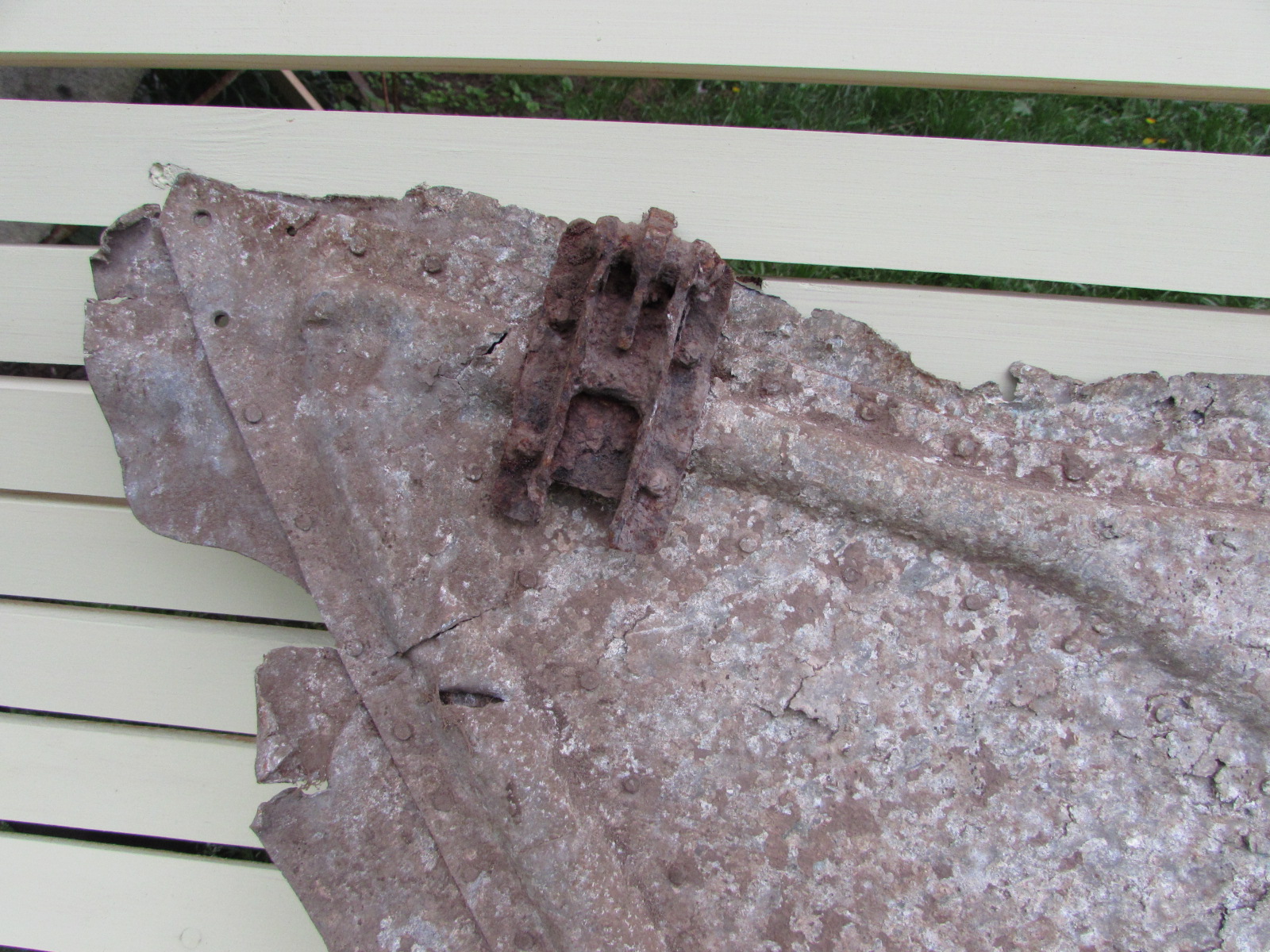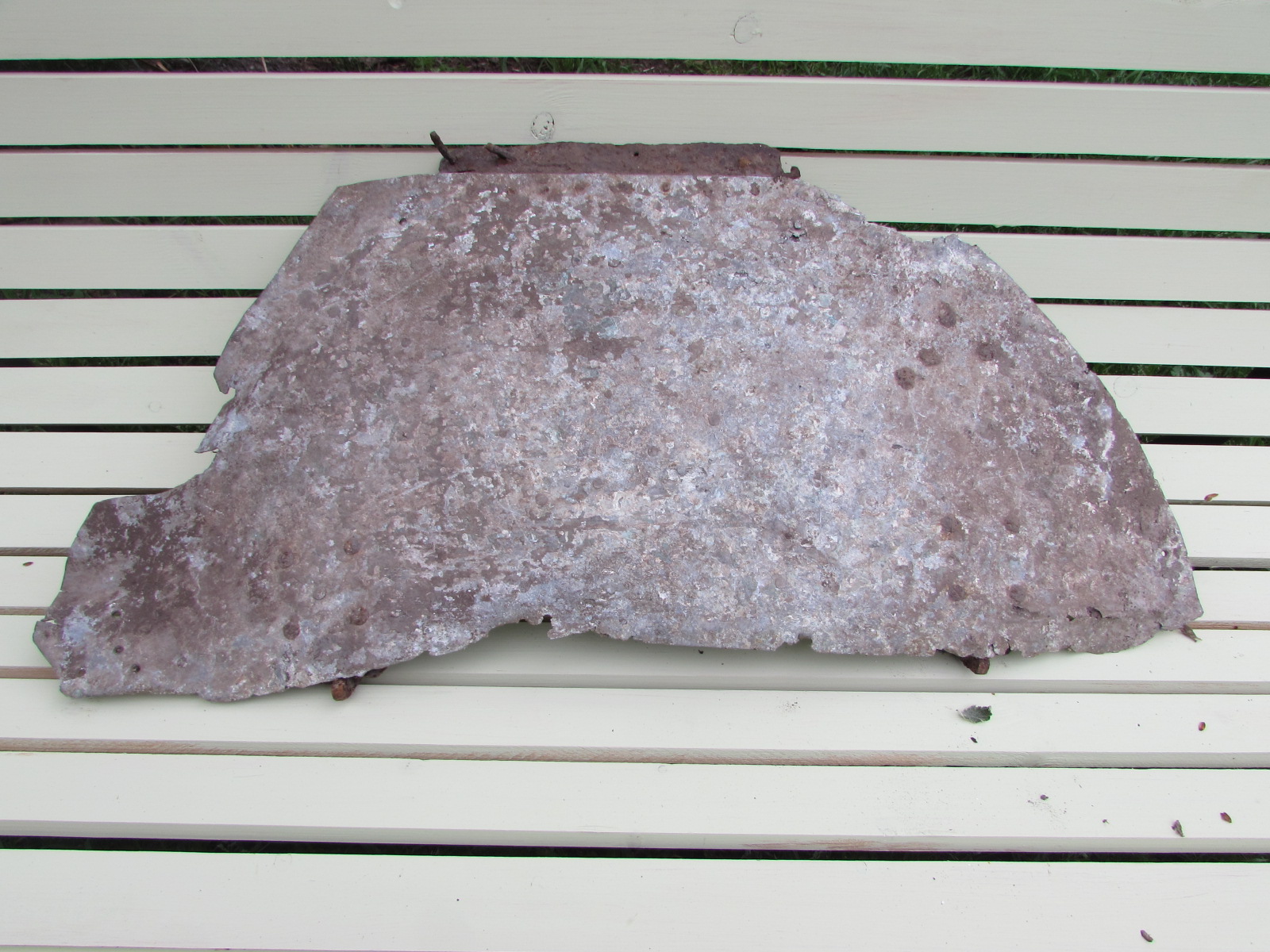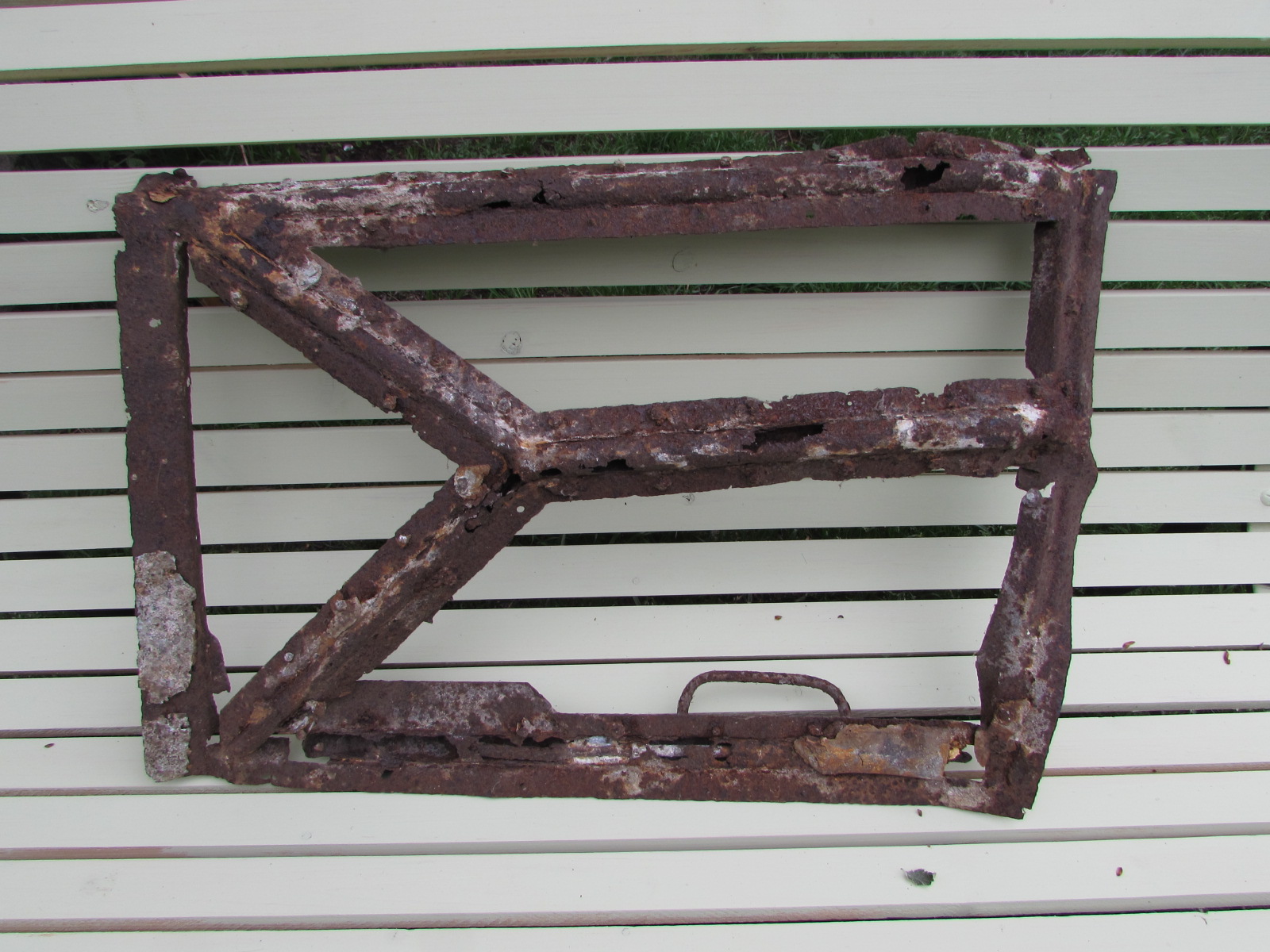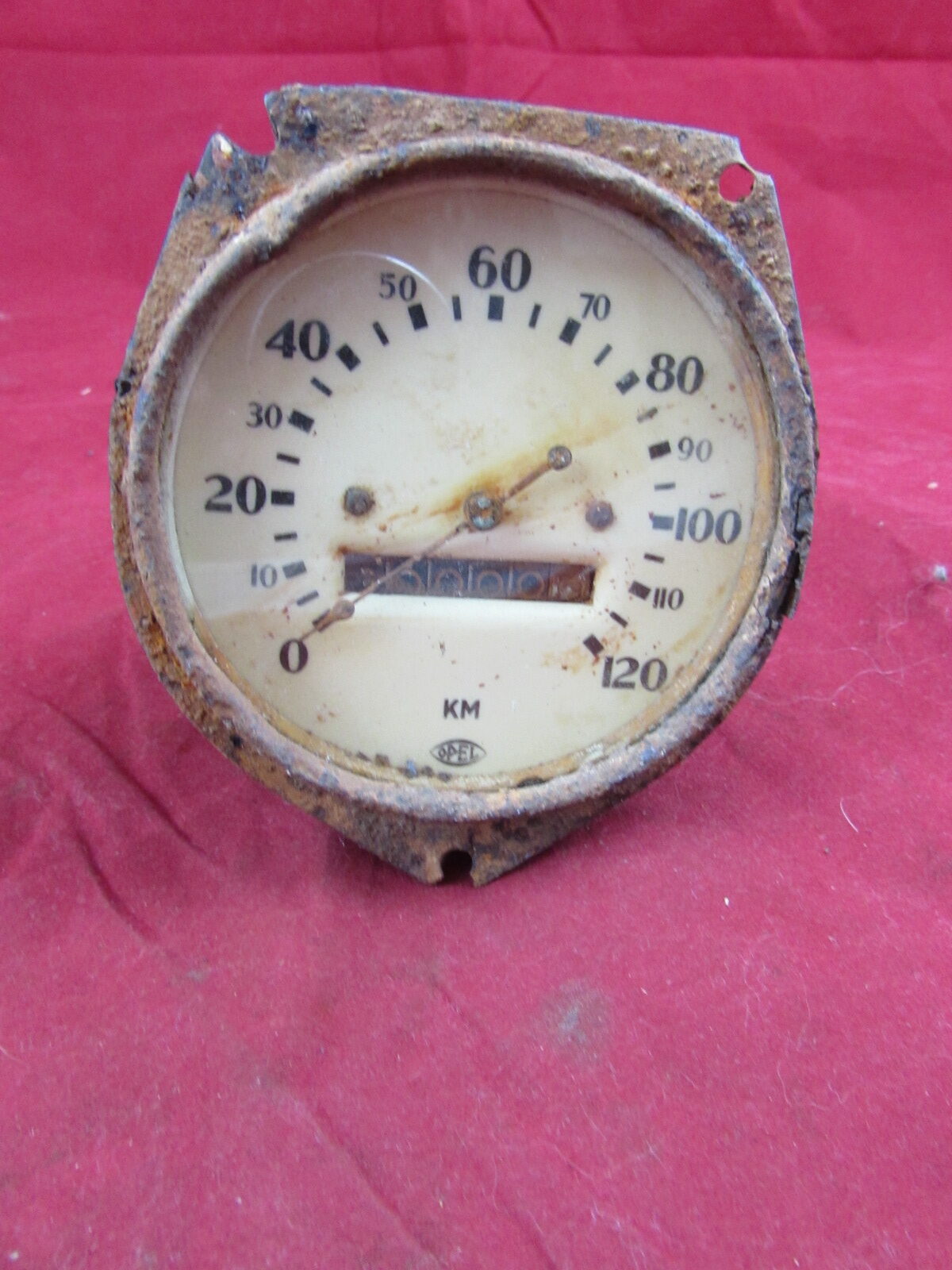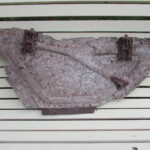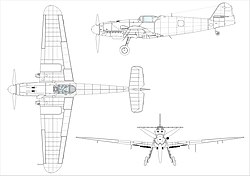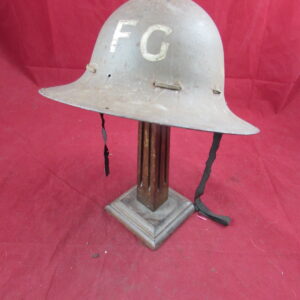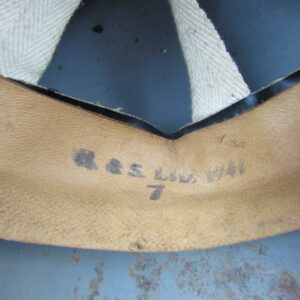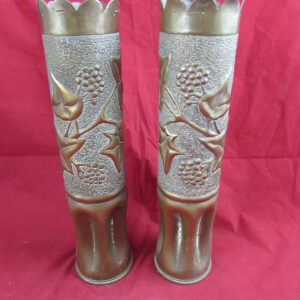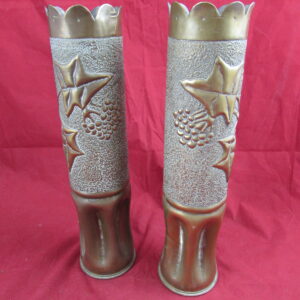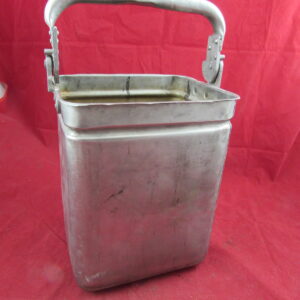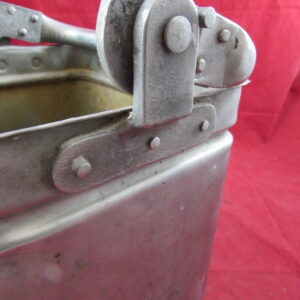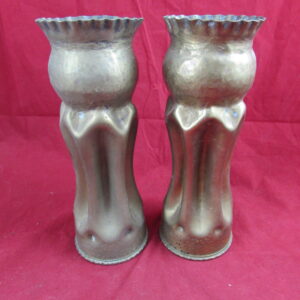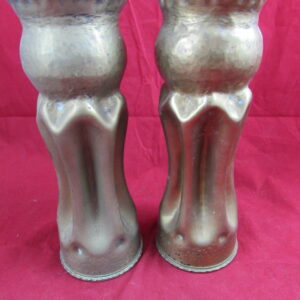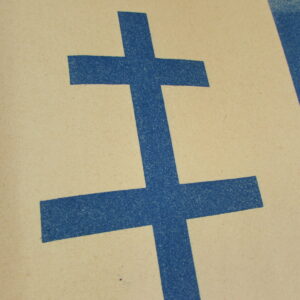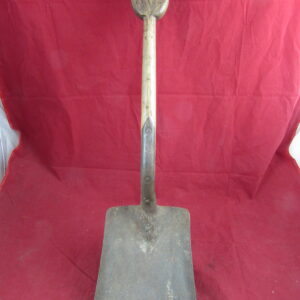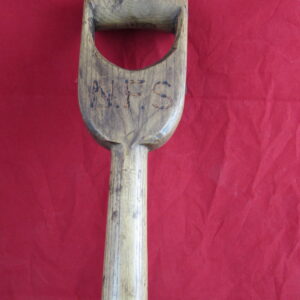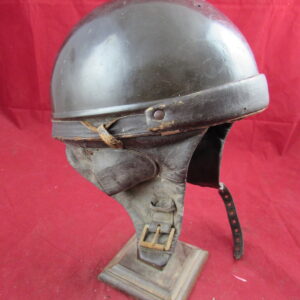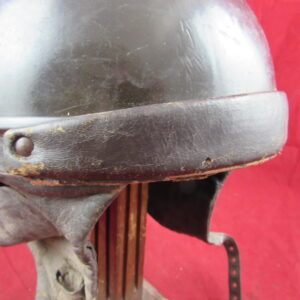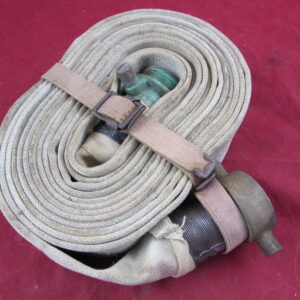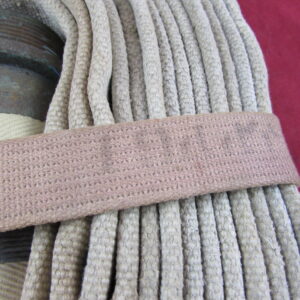WW2 Messerschmitt Bf 109 K Undercarriage Door
Views: 176
£180.00
WW2 Messerschmitt Bf 109 K Undercarriage Door RELIC
Relic condition Under carriage door ( outer gear door ) from a Messerschmitt Bf 109K . Has hinges and catch .
Item came from Hamburg Germany.
- Description
- Shipping and Delivery
Description
WW2 Messerschmitt Bf 109 K Undercarriage Door
Relic condition Under carriage door (outer gear door) from a Messerschmitt Bf 109K , it has its hinges and catch.
Item came from Hamburg Germany.
Size 28 in x 13 in.
Bf 109K
The Bf 109K was the last of the series to see operational duty and the last in the Bf 109 evolutionary line. The K series was a response to the bewildering array of series, models, modification kits and factory conversions for the Bf 109, which made production and maintenance complicated and costly – something Germany could not afford late in the war. The RLM ordered Messerschmitt to rationalise production of the Bf 109, consolidating parts and types to produce a standard model with more interchangeable parts and equipment; flaws in the design of the airframe were also to be remedied. Work on the new version began in the spring of 1943 and the prototype was ready by autumn. Series production started in August 1944 with the K-4 model, due to changes in the design and delays with the new DB 605D powerplant. The K-4 was mass-produced and was the only model believed to have been so.
Externally the K series could be identified by changes in the locations of the radio equipment hatch, which was moved forward and to a higher position between frames four and five and the filler point for the fuselage fuel tank, which was moved forward to a location between frames two and three.[Notes 4] The D/F loop was moved aft to sit between frames three and four on the fuselage spine and a small circular plate above the footstep on the port side of the fuselage was deleted. The rudder was fitted as standard with a Flettner tab and two fixed tabs although some rare examples were not fitted with the fixed tabs. All K-4s were to be fitted with a long retractable tail wheel (350 mm × 135 mm (13.8 in × 5.3 in)) with two small clamshell doors covering the recess when the tail-wheel was retracted.
The wings featured the large rectangular fairings for the large 660 mm × 190 mm (26.0 in × 7.5 in) main wheels. Small wheel well doors, originally planned for the G series, were fitted to the outer ends of the wheel bays, covering the outer wheels when retracted. These doors were often removed by front-line units. The radio equipment was the FuG 16ZY with the relocated main swept-forward radio antenna under the port wing from the G-10 being carried through as the standard for the K-series airframes. The FuG 25a Erstling IFF system, as well as the FuG 125 Hermine D/F equipment were also fitted. Internally, the oxygen bottles were relocated from the rear fuselage to the right wing. Flettner tabs for the ailerons were also to be fitted to serial production aircraft to reduce control forces but were extremely rare, with the majority of the K-4s using the same aileron system as the G series.
Armament of the K-4 consisted of a 30 mm (1.2 in) MK 108 engine-mounted cannon (Motorkanone) with 65 rounds and two 13 mm (0.51 in) MG 131s in the nose with 300 rpg, although some K-4s were fitted with the MG 151/20 as the Motorkanone. Additional Rüstsätze (equipment kits) such as a 300 L (80 US gal) drop tank (R III), bombs up to the size of 500 kg (1,100 lb) (R I), underwing 20 mm Mauser MG 151/20 cannon gondola pods (R IV) or 21 cm (8.3 in) Wfr.Gr. 21 rockets (as on the Gustav models) could be carried after minimal preparation; the latter two were rarely used by Bf 109 units at this stage of the war, although III./JG 26 were almost completely equipped with K-4s which were fitted with R IV:
…apparently all of the K-4s supplied to III./JG 26 were also equipped with 20 mm-guns in the hated underwing tubs. Uffz. Georg Genth’s regular aircraft was a G-10, but on occasion he flew a K-4. He preferred the G-10 as a dogfighter, as the K-4’s bulky armament sharply reduced its manoeuvrability.
— Caldwell
There were problems with the 30 mm (1.2 in) MK 108 Motorkanone, which often jammed while the aircraft was manoeuvring in battle, leaving the pilot to fight on with the two MG 131 heavy machine guns. The standard Revi 16C reflector sight was fitted, which was slated to be replaced by the EZ 42 Gyro gunsight, although this never happened.
Power in production K-4s was supplied by the Daimler-Benz DB 605 DB/DC engine (very early K-4s used the earlier DM). The DB/DC engine had an adjusting screw allowing the engine to use either B4 + MW 50 Methanol Water injection equipment or C3 fuel (DB 605 DB) or C3 fuel with MW 50 (DB 605 DC). The DB when using B4 fuel with MW 50 had an emergency power rating of 1,600 PS at 6,000 m (1,160 PS maximum continual at 6,600 m) and generated take-off power of 1,850 PS at 0 m at a maximum supercharger boost of 1.8 ata. The DB could also be run on higher octane C3 fuel, but the use of MW 50 was forbidden. The DC ran on C3 fuel and had a potential to generate 2,000 PS when using C3 fuel with MW 50, and a boost of 1.98 ata, but otherwise the power ratings were similar to that of the DB. A wide-chord, three-bladed VDM 9-12159A propeller of 3 m (9.8 ft) diameter was used, as on the G-6/AS, G-14/AS and G-10.
Deliveries began in mid-October 1944 and 534 examples had been delivered by the Messerschmitt A.G., Regensburg by the end of November and 856 by the end of the year. Regensburg delivered a total of 1,593 by the end of March 1945, after which production figures are missing. With such a high rate of production, despite continuous heavy fighting, by the end of January 1945, 314 K-4s – about every fourth 109 – were listed on hand with the first line Luftwaffe units. Ultimately it was intended to equip all Bf 109 units with the 109K, which marked the final stage of 109 development before the jet age.
WW2 Messerschmitt Bf 109 K Undercarriage Door
At this time, Antiqurio ships to locations within the United Kingdom mainland. Items can be shipped worldwide by prior agreement please contact us. The risk of loss and title for all items ordered on this website pass to you when the items is delivered to the shipping carrier. We are unable to calculate shipping automatically for multiple items when shipping internationally please contact us by email if you wish to purchase more than one item and live outside of the UK; we are working to resolve this
International
Customs and import duties may be applied to International orders when the shipment reaches its destination. This is not imposed by Antiqurio and these charges are the responsibility of the recipient of your order and are likely to vary from country to country. Contact your local customs office for details.
Shipping laws are different in each country. It is your responsibility to check with your Customs office to verify whether the country to which you are shipping permits the shipment of your products. Antiqurio is not responsible for any direct, indirect, punitive, or consequential damages that arise from improper international shipping practices.
